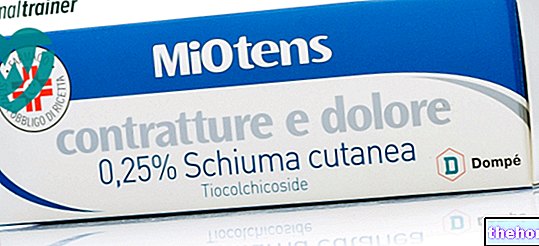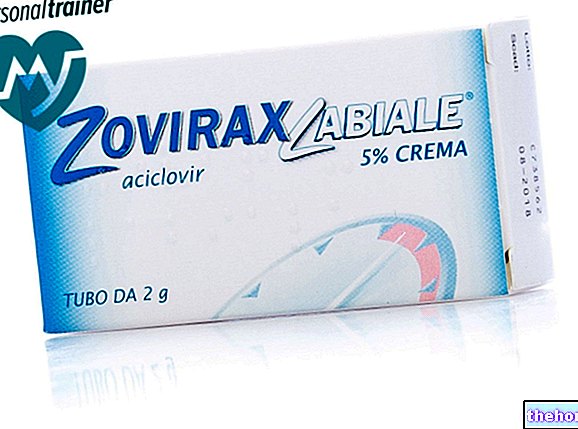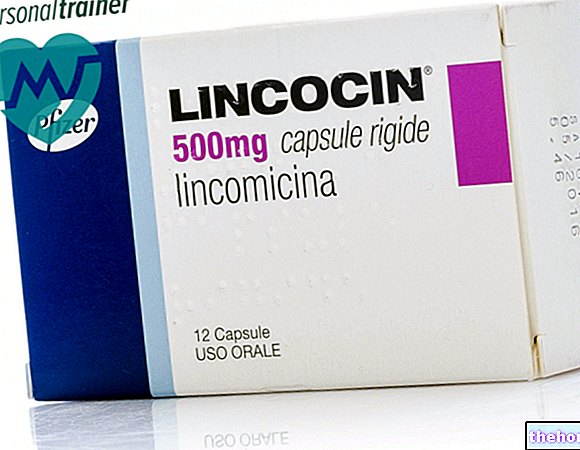Active ingredients: Paracetamol
TACHIPIRINA 500 mg tablets
TACHIPIRINA 125 mg effervescent granules
TACHIPIRINA 500 mg effervescent granules
Tachipirina package inserts are available for pack sizes: - TACHIPIRINA 500 mg tablets, TACHIPIRINA 125 mg effervescent granules, TACHIPIRINA 500 mg effervescent granules
- TACHIPIRINA 120 mg / 5 ml syrup, TACHIPIRINA 120 mg / 5 ml syrup without sugar, TACHIPIRINA 100 mg / ml oral drops, solution
- TACHIPIRINA Infants 62.5 mg suppositories, TACHIPIRINA Early Childhood 125 mg suppositories, TACHIPIRINA Children 250 mg suppositories, TACHIPIRINA Children 500 mg suppositories, TACHIPIRINA Adults 1000 mg suppositories
- TACHIPIRINA 1000 mg tablets, TACHIPIRINA 1000 mg effervescent tablets, TACHIPIRINA 1000 mg granules for oral solution
- TACHIPIRIN 10 mg / ml solution for infusion
Why is Tachipirina used? What is it for?
Tachipirina belongs to the pharmacotherapeutic group of other analgesics and antipyretics
As antipyretic: symptomatic treatment of febrile diseases such as influenza, exanthematous diseases, acute respiratory tract diseases, etc.
As an analgesic: headaches, neuralgia, myalgia and other painful manifestations of medium entity, of various origins.
Contraindications When Tachipirina should not be used
Hypersensitivity to paracetamol or to any of the excipients.
Patients with severe haemolytic anemia: this contraindication does not refer to tablets and effervescent granules in the 500 mg dosage.
Severe hepatocellular insufficiency: this contraindication does not refer to tablets and effervescent granules in the 500 mg dosage.
Precautions for use What you need to know before taking Tachipirina
Paracetamol should be administered with caution to patients with mild to moderate hepatocellular insufficiency (including Gilbert's syndrome), severe hepatic insufficiency (Child-Pugh> 9), acute hepatitis, concomitant treatment with drugs that impair liver function, deficiency of glucose-6-phosphate dehydrogenase, haemolytic anemia since high or prolonged doses of the product can cause a high-risk liver disease and alterations in the kidney and blood, even serious.
In case of prolonged use it is advisable to monitor liver and kidney function and blood count.
Use with caution in case of chronic alcoholism, excessive alcohol intake (3 or more alcoholic drinks per day), anorexia, bulimia or cachexia, chronic malnutrition (low reserves of hepatic glutathione), dehydration, hypovolemia.
Interactions Which drugs or foods can modify the effect of Tachipirina
Tell your doctor or pharmacist if you have recently taken any other medicines, even those without a prescription.
Oral absorption of paracetamol is dependent on the rate of gastric emptying. Therefore, concomitant administration of drugs that slow (eg anticholinergics, opioids) or increase (eg prokinetics) the rate of gastric emptying may lead to a decrease, respectively. or an increase in the bioavailability of the product.
Concomitant administration of cholestyramine reduces the absorption of paracetamol. The concomitant intake of paracetamol and chloramphenicol can induce an increase in the half-life of chloramphenicol, with the risk of elevating its toxicity.
The concomitant use of paracetamol (4 g per day for at least 4 days) with oral anticoagulants may induce slight variations in INR values. In these cases, more frequent monitoring of INR values should be performed during concomitant use and after its interruption.
Use with extreme caution and under strict control during chronic treatment with drugs that can determine the induction of hepatic monooxygenases or in case of exposure to substances that can have this effect (for example rifampicin, cimetidine, antiepileptics such as glutethimide, phenobarbital, carbamazepine) The same is true in cases of alcoholism and in patients treated with zidovudine.
The administration of paracetamol can interfere with the determination of uricaemia (by the phosphotungstic acid method) and with that of blood glucose (by the glucose-oxidase-peroxidase method).
Warnings It is important to know that:
Do not administer for more than 3 consecutive days without consulting your doctor.
In case of allergic reactions, the administration should be discontinued and the doctor contacted. During treatment with paracetamol, before taking any other drug, check that it does not contain the same active ingredient, as serious adverse reactions can occur if paracetamol is taken in high doses.
Also, before combining any other drug, contact your doctor. See also Interactions.
Ask your doctor or pharmacist for advice before taking any medicine. Clinical experience with the use of paracetamol during pregnancy and lactation is limited.
Pregnancy
Epidemiological data on the use of therapeutic doses of oral paracetamol indicate that no undesirable effects occur in pregnant women or on the health of the fetus or newborns. Reproductive studies with paracetamol have shown no malformation or foetotoxic effects. Paracetamol must, however, be used during pregnancy only after a "careful evaluation of the risk / benefit ratio.
Feeding time
Paracetamol is excreted in breast milk in small quantities. Rash has been reported in breastfed infants. However, administration of paracetamol is considered compatible with breastfeeding. However, caution should be used when administering paracetamol to breastfeeding women.
Effects on ability to drive and use machines.
Tachypirin does not affect the ability to drive or use machines.
Important information about some of the ingredients
TACHIPIRINA 125 mg effervescent granules contains:
- aspartame, is a source of phenylalanine. It can be harmful in case of phenylketonuria (deficiency of the enzyme phenylalanine hydroxylase) due to the risk linked to the accumulation of the amino acid phenylalanine.
- maltitol: if the patient is aware that they have an intolerance to some sugars, contact their doctor before taking this medicine.
- 3.07 mmol sodium per sachet: to be taken into consideration in people with reduced kidney function or on a low sodium diet.
TACHIPIRINA 500 mg effervescent granules contains:
- aspartame, is a source of phenylalanine. It can be harmful in case of phenylketonuria (deficiency of the enzyme phenylalanine hydroxylase) due to the risk linked to the accumulation of the amino acid phenylalanine.
- maltitol: if the patient is aware that they have an intolerance to some sugars, contact their doctor before taking this medicine. 12.3 mmol sodium per sachet: to be taken into consideration in people with reduced kidney function or who follow a diet low sodium content.
Dosage and method of use How to use Tachipirina: Dosage
For children it is essential to respect the dosage defined according to their body weight, and therefore to choose the suitable formulation. Approximate ages as a function of body weight are given for information.
Below 3 months, in case of jaundice, it is advisable to reduce the single oral dose.
In adults, the maximum oral dosage is 3000 mg of paracetamol per day (see Overdose).
The physician should assess the need for treatment for more than 3 consecutive days.
The dosage schedule of Tachipirina in relation to body weight and route of administration is as follows:
500 mg tablets
- Children weighing between 21 and 25 kg (approximately between 6 and 10 years): 1⁄2 tablet at a time, to be repeated if necessary after 4 hours, without exceeding 6 doses per day (3 tablets).
- Children weighing between 26 and 40 kg (approximately between 8 and 13 years): 1 tablet at a time, to be repeated if necessary after 6 hours, without exceeding 4 doses per day.
- Boys weighing between 41 and 50 kg (approximately between 12 and 15 years): 1 tablet at a time, to be repeated if necessary after 4 hours, without exceeding 6 doses per day.
- Children weighing more than 50 kg (approximately over 15 years): 1 tablet at a time, to be repeated if necessary after 4 hours, without exceeding 6 doses per day.
- Adults: 1 tablet at a time, to be repeated if necessary after 4 hours, without exceeding 6 doses per day. In case of severe pain or high fever, 2 tablets of 500 mg to be repeated if necessary after not less than 4 hours.
500 mg effervescent granules in sachets
- Dissolve the effervescent granules in a glass of water. Children weighing between 26 and 40 kg (approximately between 8 and 13 years): 1 sachet at a time, to be repeated if necessary after 6 hours, without exceeding 4 doses per day.
- Boys weighing between 41 and 50 kg (approximately between 12 and 15 years): 1 sachet at a time, to be repeated if necessary after 4 hours, without exceeding 6 doses per day.
- Children weighing more than 50 kg (approximately over 15 years): 1 sachet at a time, to be repeated if necessary after 4 hours, without exceeding 6 doses per day.
- Adults: 1 sachet at a time, to be repeated if necessary after 4 hours, without exceeding 6 doses per day. In case of severe pain or high fever, 2 sachets of 500 mg to be repeated if necessary after not less than 4 hours.
Effervescent granules of 125 mg in sachets
Dissolve the effervescent granules in a glass of water.
- Children weighing between 7 and 10 kg (approximately between 6 and 18 months): 1 sachet at a time, to be repeated if necessary after 6 hours, without exceeding 4 doses per day.
- Children weighing between 11 and 12 kg (approximately between 18 and 24 months): 1 sachet at a time, to be repeated if necessary after 4 hours, without exceeding 6 doses per day.
- Children weighing between 13 and 20 kg (approximately between 2 and 7 years): 2 sachets at a time (corresponding to 250 mg of paracetamol), to be repeated if necessary after 6 hours, without exceeding 4 doses per day.
- Children weighing between 21 and 25 kg (approximately between 6 and 10 years): 2 sachets at a time (corresponding to 250 mg of paracetamol), to be repeated if necessary after 4 hours, without exceeding 6 doses per day.
Kidney failure
In case of severe renal insufficiency (creatinine clearance below the dose interval should be at least 8 hours.
Overdose What to do if you have taken too much Tachipirina
There is a risk of intoxication, especially in patients with liver disease, in cases of chronic alcoholism, in patients with chronic malnutrition, and in patients receiving enzyme inducers. In these cases, overdose can be fatal.
Symptoms
In case of accidental intake of very high doses of paracetamol, acute intoxication is manifested by anorexia, nausea and vomiting followed by profound deterioration of the general condition; these symptoms usually appear within the first 24 hours. In case of overdose, paracetamol can cause hepatic cytolysis which can evolve towards massive and irreversible necrosis, with consequent hepatocellular insufficiency, acidose levels of hepatic transaminases, lactic-dehydrogenase, and bilirubinemia, and a reduction in prothrombin levels, which may occur in the 12-48 hours following the " ingestion.
Treatment
The measures to be adopted consist of early gastric emptying and hospitalization for appropriate treatment, by administering, as early as possible, N-acetylcysteine as an antidote: the dosage is 150 mg / kg i.v. in glucose solution in 15 minutes, then 50 mg / kg in the following 4 hours and 100 mg / kg in the following 16 hours, for a total of 300 mg / kg in 20 hours.
In case of accidental ingestion / intake of an excessive dose of Tachypirin, notify your doctor immediately or go to the nearest hospital.
IF YOU ARE IN ANY DOUBT ABOUT THE USE OF TACHIPIRINE, CONTACT YOUR DOCTOR OR PHARMACIST.
Side Effects What are the side effects of Tachipirina
Like all medicines, Tachypirin can cause side effects, although not everybody gets them.
Below are the side effects of acetaminophen. Insufficient data are available to establish the frequency of the individual effects listed.
Compliance with the instructions contained in the package leaflet reduces the risk of undesirable effects. If any of the side effects gets serious, or if you notice any side effects not listed in this leaflet, please inform your doctor or pharmacist.
Expiry and Retention
Expiry: see the expiry date indicated on the package. The expiry date indicated refers to the product in intact packaging, correctly stored
Warning: do not use the medicine after the expiry date indicated on the package.
Medicines should not be disposed of via wastewater or household waste. Ask your pharmacist how to dispose of medicines you no longer use. This will help protect the environment.
KEEP THE MEDICINAL PRODUCT OUT OF THE REACH AND SIGHT OF CHILDREN.
Source Package Leaflet: AIFA (Italian Medicines Agency). Content published in January 2016. The information present may not be up-to-date.
To have access to the most up-to-date version, it is advisable to access the AIFA (Italian Medicines Agency) website. Disclaimer and useful information.
01.0 NAME OF THE MEDICINAL PRODUCT
TACHIPIRINA
02.0 QUALITATIVE AND QUANTITATIVE COMPOSITION
TACHIPIRINA 500 mg tablets
Each tablet contains:
active ingredient: paracetamol 500 mg.
TACHIPIRINA 500 mg effervescent granules
Each sachet contains:
active ingredient: paracetamol 500 mg
excipients: aspartame, maltitol, 12.3 mmol of sodium per sachet
TACHIPIRINA 125 mg effervescent granules
Each sachet contains:
active ingredient: paracetamol 125 mg
excipients: aspartame, maltitol, 3.07 mmol sodium per sachet
TACHIPIRINA 120 mg / 5 ml syrup
5 ml of syrup contain
active ingredient: paracetamol 120 mg
excipients: sucrose, methyl parahydroxybenzoate.
TACHIPIRINA 120 mg / 5 ml sugar-free syrup
5 ml of syrup contain
active ingredient: paracetamol 120 mg
excipients: sorbitol, methyl parahydroxybenzoate.
TACHIPIRINA 100 mg / ml oral drops, solution
1 ml of solution contains
active ingredient: paracetamol 100 mg
excipients: sorbitol, propylene glycol
Paracetamol Infants 62.5 mg suppositories
Each suppository contains
active ingredient: paracetamol 62.5 mg
TACHIPIRINA Early Childhood 125 mg suppositories
Each suppository contains
active ingredient: paracetamol 125 mg
TACHIPIRINA Children 250 mg suppositories
Each suppository contains
active ingredient: paracetamol 250 mg
TACHIPIRINA Children 500 mg suppositories
Each suppository contains
active ingredient: paracetamol 500 mg
TACHIPIRINA Adults 1000 mg suppositories
Each suppository contains
active ingredient: paracetamol 1000 mg
For the complete list of excipients, see section 6.1.
03.0 PHARMACEUTICAL FORM
Tablets.
White, scored, round, biconvex tablet with a central score line on one side.
Effervescent granules.
White to slightly yellow granules.
Syrup. Sugar-free syrup.
Clear colorless to slightly yellow syrupy solution.
Oral drops, solution.
Clear syrupy solution of orange color.
Suppositories.
Suppositories from white to cream color.
04.0 CLINICAL INFORMATION
04.1 Therapeutic indications
As antipyretic: symptomatic treatment of febrile diseases such as influenza, exanthematous diseases, acute respiratory tract diseases, etc.
As an analgesic: headaches, neuralgia, myalgia and other painful manifestations of medium entity, of various origins.
04.2 Posology and method of administration
For children it is essential to respect the dosage defined according to their body weight, and therefore to choose the suitable formulation. Approximate ages as a function of body weight are given for information.
Below three months, in case of jaundice, it is advisable to reduce the single oral dose.
In adults, the maximum oral dose is 3000 mg and rectally 4000 mg of paracetamol per day (see section 4.9).
The physician should assess the need for treatment for more than 3 consecutive days.
The dosage schedule of Tachipirina in relation to body weight and route of administration is as follows:
500 mg tablets
• Children weighing between 21 and 25 kg (approximately between 6 and 10 years): ½ tablet at a time, to be repeated if necessary after 4 hours, without exceeding 6 doses per day (3 tablets).
• Children weighing between 26 and 40 kg (approximately between 8 and 13 years): 1 tablet at a time, to be repeated if necessary after 6 hours, without exceeding 4 doses per day.
• Boys weighing between 41 and 50 kg (approximately between 12 and 15 years): 1 tablet at a time, to be repeated if necessary after 4 hours, without exceeding 6 doses per day.
• Kids weighing more than 50 kg (approximately over 15 years): 1 tablet at a time, to be repeated if necessary after 4 hours, without exceeding 6 doses per day.
• Adults: 1 tablet at a time, to be repeated if necessary after 4 hours, without exceeding 6 doses per day. In case of severe pain or high fever, 2 tablets of 500 mg to be repeated if necessary after not less than 4 hours.
500 mg effervescent granules in sachets
Dissolve the effervescent granules in a glass of water.
• Children weighing between 26 and 40 kg (approximately between 8 and 13 years): 1 sachet at a time, to be repeated if necessary after 6 hours, without exceeding 4 doses per day.
• Boys weighing between 41 and 50 kg (approximately between 12 and 15 years): 1 sachet at a time, to be repeated if necessary after 4 hours, without exceeding 6 doses per day.
• Kids weighing more than 50 kg (approximately over 15 years): 1 sachet at a time, to be repeated if necessary after 4 hours, without exceeding 6 doses per day.
• Adults: 1 sachet at a time, to be repeated if necessary after 4 hours, without exceeding 6 doses per day. In case of severe pain or high fever, 2 sachets of 500 mg to be repeated if necessary after not less than 4 hours.
Effervescent granules of 125 mg in sachets
Dissolve the effervescent granules in a glass of water.
• Children weighing between 7 and 10 kg (approximately between 6 and 18 months): 1 sachet at a time, to be repeated if necessary after 6 hours, without exceeding 4 doses per day.
• Children weighing between 11 and 12 kg (approximately between 18 and 24 months): 1 sachet at a time, to be repeated if necessary after 4 hours, without exceeding 6 doses per day.
• Children weighing between 13 and 20 kg (approximately between 2 and 7 years): 2 sachets at a time (corresponding to 250 mg of paracetamol), to be repeated if necessary after 6 hours, without exceeding 4 doses per day.
• Children weighing between 21 and 25 kg (approximately between 6 and 10 years): 2 sachets at a time (corresponding to 250 mg of paracetamol), to be repeated if necessary after 4 hours, without exceeding 6 doses per day.
120 mg / 5 ml syrup
A measuring cup is attached to the package with level marks corresponding to the capacities of 5 ml, 7.5 ml, 10 ml, 15 ml and 20 ml.
120 mg / 5 ml syrup without sugar
The package includes a dosing syringe with indicated level marks corresponding to the capacities of 2.5 ml and 5 ml and a measuring cup with indicated level marks corresponding to the capacities of 5 ml, 7.5 ml, 10 ml, 15 ml and 20 ml.
• Children weighing between 7 and 10 kg (approximately between 6 and 18 months): 5 ml at a time (corresponding to 120 mg of paracetamol), to be repeated if necessary after 6 hours, without exceeding 4 doses per day.
• Children weighing between 11 and 12 kg (approximately between 18 and 24 months): 5 ml at a time (corresponding to 120 mg of paracetamol), to be repeated if necessary after 4 hours, without exceeding 6 doses per day.
• Children weighing between 13 and 20 kg (approximately between 2 and 7 years): 7.5 - 10 ml at a time (corresponding respectively to 180 and 240 mg of paracetamol), to be repeated if necessary after 6 hours, without exceeding 4 doses per day.
• Children weighing between 21 and 25 kg (approximately between 6 and 10 years): 10 ml at a time (corresponding to 240 mg of paracetamol), to be repeated if necessary after 4 hours, without exceeding 6 doses per day.
• Children weighing between 26 and 40 kg (approximately between 8 and 13 years): 15-20 ml at a time (corresponding respectively to 360 and 480 mg of paracetamol), to be repeated if necessary after 6 hours, without exceeding 4 doses per day.
• Boys weighing between 41 and 50 kg (approximately between 12 and 15 years): 20 ml at a time (corresponding to 480 mg of paracetamol), to be repeated if necessary after 4 hours, without exceeding 6 doses per day.
• Kids weighing more than 50 kg (approximately over 15 years): 20 ml at a time (corresponding to 480 mg of paracetamol), to be repeated if necessary after 4 hours, without exceeding 6 doses per day.
• Adults: 20 ml at a time (corresponding to 480 mg), to be repeated if necessary after 4 hours, without exceeding 6 doses per day.
The syrup package contains a dosage rule to facilitate the calculation of the dose of the product as a function of body weight.
Oral drops, 100 mg / ml solution
One drop of Tachipirina oral drops corresponds to 3.1 mg.
• Children weighing between 3.2 and 6 kg (approximately between birth and 6 months): 14-20 drops at a time (corresponding respectively to 43.4 and 62 mg of paracetamol), to be repeated if necessary after 6 hours, without exceeding 4 doses per day.
• Children weighing between 7 and 10 kg (approximately between 6 and 18 months): 35-40 drops at a time (corresponding respectively to 108.5 and 124 mg of paracetamol), to be repeated if necessary after 6 hours, without exceeding 4 doses per day.
• Children weighing between 11 and 12 kg (approximately between 18 and 24 months): 35-40 drops at a time (corresponding respectively to 108.5 and 124 mg of paracetamol), to be repeated if necessary after 4 hours, without exceeding 6 doses per day.
Suppositories Infants of 62.5 mg
• Children weighing between 3.2 and 5 kg (approximately between birth and 3 months): 1 suppository at a time, to be repeated if necessary after 6 hours, without exceeding 4 doses per day.
125 mg Early Childhood Suppositories
• Children weighing between 6 and 7 kg (approximately between 3 and 6 months): 1 suppository at a time, to be repeated if necessary after 6 hours, without exceeding 4 doses per day.
• Children weighing between 7 and 10 kg (approximately between 6 and 18 months): 1 suppository at a time, to be repeated if necessary after 4 - 6 hours, without exceeding 5 doses per day.
• Children weighing between 11 and 12 kg (approximately between 18 and 24 months): 1 suppository at a time, to be repeated if necessary after 4 hours, without exceeding 6 doses per day.
Suppositories Children of 250 mg
• Children weighing between 11 and 12 kg (approximately between 18 and 24 months): 1 suppository at a time, to be repeated if necessary after 8 hours, without exceeding 3 doses per day.
• Children weighing between 13 and 20 kg (approximately between 2 and 7 years): 1 suppository at a time, to be repeated if necessary after 6 hours, without exceeding 4 doses per day.
Suppositories Children of 500 mg
• Children weighing between 21 and 25 kg (approximately between 6 and 10 years): 1 suppository at a time, to be repeated if necessary after 8 hours, without exceeding 3 doses per day.
• Children weighing between 26 and 40 kg (approximately between 8 and 13 years): 1 suppository at a time, to be repeated if necessary after 6 hours, without exceeding 4 doses per day.
Adult suppositories of 1000 mg
• Boys weighing between 41 and 50 kg (approximately between 12 and 15 years): 1 suppository at a time, to be repeated if necessary after 8 hours, without exceeding 3 doses per day.
• Kids weighing more than 50 kg (approximately over 15 years): 1 suppository at a time, to be repeated if necessary after 6 hours, without exceeding 4 doses per day.
• Adults: 1 suppository at a time, to be repeated if necessary after 6 hours, without exceeding 4 doses per day.
Kidney failure
In case of severe renal insufficiency (creatinine clearance less than 10 ml / min), the interval between dosing should be at least 8 hours.
04.3 Contraindications
• Hypersensitivity to paracetamol or to any of the excipients.
• Patients with severe haemolytic anemia (this contraindication does not refer to the 500mg oral formulations).
• Severe hepatocellular insufficiency (this contraindication does not refer to oral formulations of 500mg).
04.4 Special warnings and appropriate precautions for use
In rare cases of allergic reactions, administration should be discontinued and appropriate treatment instituted.
Use with caution in case of chronic alcoholism, excessive alcohol intake (3 or more alcoholic drinks per day), anorexia, bulimia or cachexia, chronic malnutrition (low reserves of hepatic glutathione), dehydration, hypovolemia.
Paracetamol should be administered with caution to patients with mild to moderate hepatocellular insufficiency (including Gilbert's syndrome), severe hepatic insufficiency (Child-Pugh> 9), acute hepatitis, concomitant treatment with drugs that impair liver function, deficiency of glucose-6-phosphate dehydrogenase, haemolytic anemia.
High or prolonged doses of the product can cause alterations in the kidney and blood, even serious, therefore the administration in subjects with renal insufficiency must be carried out only if actually necessary and under direct medical supervision.
In case of prolonged use it is advisable to monitor liver and kidney function and blood count.
During treatment with paracetamol, before taking any other drug, check that it does not contain the same active ingredient, as serious adverse reactions can occur if paracetamol is taken in high doses.
Instruct the patient to contact the physician before associating any other medication. See also par. 4.5.
Important information about some of the ingredients
Tachipirina drops, solution contains:
• sorbitol: use with caution in patients with rare hereditary problems of fructose intolerance.
• propylene glycol which can cause symptoms similar to those caused by alcohol.
Tachipirina syrup contains:
• sucrose: use with caution in patients with rare hereditary problems of fructose intolerance, glucose-galactose malabsorption, or sucrase-isomaltase insufficiency; this should also be taken into account for use in diabetic patients and in patients who follow low-calorie diets.
Tachipirina syrup and "sugar-free" syrup contain:
• methyl parahydroxybenzoate which can cause allergic reactions (including delayed).
Tachipirina syrup without sugar contains:
• sorbitol: use with caution in patients with rare hereditary problems of fructose intolerance.
Tachipirina 125 mg effervescent granules contains:
• aspartame, is a source of phenylalanine. It can be harmful in case of phenylketonuria (deficiency of the enzyme phenylalanine hydroxylase) due to the risk linked to the accumulation of the amino acid phenylalanine. Maltitol: use with caution in patients with rare hereditary problems of fructose intolerance.
• 3.07 mmol sodium per sachet: to be taken into consideration in people with reduced kidney function or on a low sodium diet.
Tachipirina 500 mg effervescent granules contains:
• aspartame, is a source of phenylalanine. It can be harmful in case of phenylketonuria (deficiency of the enzyme phenylalanine hydroxylase) due to the risk linked to the accumulation of the amino acid phenylalanine.
• maltitol: use with caution in patients with rare hereditary problems of fructose intolerance. 12.3 mmol sodium per sachet: to be taken into consideration in people with reduced kidney function or on a low sodium diet.
04.5 Interactions with other medicinal products and other forms of interaction
Oral absorption of paracetamol is dependent on the rate of gastric emptying. Therefore, concomitant administration of drugs that slow (eg anticholinergics, opioids) or increase (eg prokinetics) the rate of gastric emptying may lead to a decrease, respectively. or an increase in the bioavailability of the product.
Concomitant administration of cholestyramine reduces the absorption of paracetamol. The concomitant intake of paracetamol and chloramphenicol can induce an increase in the half-life of chloramphenicol, with the risk of elevating its toxicity.
The concomitant use of paracetamol (4 g per day for at least 4 days) with oral anticoagulants may induce slight variations in INR values. In these cases, more frequent monitoring of INR values should be performed during concomitant use and after its interruption.
Use with extreme caution and under strict control during chronic treatment with drugs that can determine the induction of hepatic monooxygenases or in case of exposure to substances that can have this effect (for example rifampicin, cimetidine, antiepileptics such as glutethimide, phenobarbital, carbamazepine) The same is true in cases of alcoholism and in patients treated with zidovudine.
The administration of paracetamol can interfere with the determination of uricaemia (by the phosphotungstic acid method) and with that of blood glucose (by the glucose-oxidase-peroxidase method).
04.6 Pregnancy and lactation
Although clinical studies in pregnant or lactating patients have not shown particular contraindications to the use of paracetamol or caused unwanted effects affecting the mother or child, it is recommended to administer the product only in cases of real need and under the direct supervision of the doctor. .
04.7 Effects on ability to drive and use machines
Tachipirina does not affect the ability to drive or use machines.
04.8 Undesirable effects
The following are the side effects of acetaminophen organized according to the MedDRA systemic and organic classification. Insufficient data are available to establish the frequency of the individual effects listed.
04.9 Overdose
There is a risk of intoxication, especially in patients with liver disease, in cases of chronic alcoholism, in patients with chronic malnutrition, and in patients receiving enzyme inducers. In these cases, overdose can be fatal.
Symptoms
In case of accidental intake of very high doses of paracetamol, acute intoxication is manifested by anorexia, nausea and vomiting followed by profound deterioration of the general condition; these symptoms usually appear within the first 24 hours. In case of overdose, paracetamol can cause hepatic cytolysis which can evolve towards massive and irreversible necrosis, with consequent hepatocellular insufficiency, metabolic acidosis and encephalopathy, which can lead to coma and death. and a reduction in prothrombin levels, which can occur in the 12-48 hours following ingestion.
Treatment
The measures to be adopted consist of early gastric emptying and hospitalization for appropriate treatment, by administering, as early as possible, N-acetylcysteine as an antidote: the dosage is 150 mg / kg i.v. in glucose solution in 15 minutes, then 50 mg / kg in the following 4 hours and 100 mg / kg in the following 16 hours, for a total of 300 mg / kg in 20 hours.
05.0 PHARMACOLOGICAL PROPERTIES
05.1 Pharmacodynamic properties
Pharmacotherapeutic group: analgesics and antipyretics, anilides.
ATC code: N02BE01.
The analgesic effect of paracetamol is attributable to a direct action at the level of the Central Nervous System, probably mediated by the opioid and serotoninergic system, as well as by an action of inhibition of the synthesis of prostaglandins at a central level. Furthermore, paracetamol has a marked antipyretic activity.
05.2 Pharmacokinetic properties
Absorption
Absorption of oral paracetamol is complete and rapid. Maximum plasma concentrations are reached between 30 and 60 minutes after ingestion.
Distribution
Paracetamol is evenly distributed in all tissues. Concentrations in blood, saliva and plasma are comparable. Plasma protein binding is weak.
Metabolism
Paracetamol is mainly metabolised in the liver. There are two main metabolic pathways: conjugation with glucuronic acid and sulfo-conjugation. This last pathway is rapidly saturable at doses higher than therapeutic doses. A minor pathway, catalyzed by cytochrome P450 (in particular CYP2E1), leads to the formation of a reactive intermediate, N-acetyl-p-benzoquinoneimine, which, in normal conditions of use, it is rapidly detoxified from glutathione and eliminated in the urine after conjugation with cysteine and mercapturic acid. Conversely, during severe poisoning, the amount of this toxic metabolite is increased.
Elimination
It is essentially urinary. 90% of the ingested dose is eliminated by the kidneys in 24 hours, mainly as glucuronide (60 to 80%) and as sulfur conjugates (20 to 30%). Less than 5% is eliminated unchanged. The elimination half-life is approximately 2 hours.
Kidney failure
In case of severe renal insufficiency (creatinine clearance less than 10 ml / min) the elimination of paracetamol and its metabolites is delayed.
05.3 Preclinical safety data
Acute and chronic toxicity studies did not reveal any adverse effects. The LD 50 for paracetamol administered orally varies from 850 to over 3000 mg / kg depending on the animal species used.
06.0 PHARMACEUTICAL INFORMATION
06.1 Excipients
• Tablets: microcrystalline cellulose, povidone, croscarmellose sodium, magnesium stearate, precipitated silica.
• Effervescent granules: maltitol, mannitol, sodium bicarbonate, anhydrous citric acid, citrus flavor, aspartame, docusate sodium.
• Syrup: sucrose, sodium citrate, sodium saccharin, methyl parahydroxybenzoate, potassium sorbate, macrogol 6000, citric acid monohydrate, strawberry flavor, mandarin flavor, purified water.
• Sugar-free syrup: macrogol, glycerol, sorbitol, xylitol, sodium citrate, xanthan gum, citric acid, mandarin flavor, potassium sorbate, methyl parahydroxybenzoate, strawberry flavor, sucralose, purified water.
• Oral drops: propylene glycol, Macrogol 6000, sorbitol, sodium saccharin, citrus vanilla flavor, propyl gallate, caramel (E150a), sodium edetate, purified water.
• Suppositories: solid semisynthetic glycerides.
06.2 Incompatibility
There are no known chemical-physical incompatibilities of paracetamol with other compounds.
06.3 Period of validity
Tablets, syrup and suppositories from 125 mg, 250 mg, 500 mg, 1000 mg: 5 years.
Suppositories of 62.5 mg: 3 years.
Effervescent granules: 3 years.
Oral drops: 2 years
The validity after first opening the drops is 1 year.
Sugar-free syrup: 2 years.
The shelf life after first opening the sugar-free syrup is 1 year.
06.4 Special precautions for storage
Tablets, effervescent granules, syrup and sugar-free syrup, oral drops, solution: no special storage precautions.
Suppositories: store at a temperature not exceeding 25 ° C.
06.5 Nature of the immediate packaging and contents of the package
Tachipirina 500 mg tablets:
Box of 10 divisible tablets: 1 white polyvinyl chloride (PVC) blister sealed with aluminum foil coated with a polyvinyl chloride (PVC) heat seal film containing 10 tablets of 500 mg.
Box of 20 divisible tablets: 2 white polyvinyl chloride (PVC) blisters heat sealed with aluminum foil coated with a polyvinyl chloride (PVC) heat seal film each containing 10 x 500 mg tablets.
Carton of 30 divisible tablets: 3 white polyvinyl chloride (PVC) blisters heat sealed with aluminum foil coated with a polyvinyl chloride (PVC) heat seal film each containing 10 x 500 mg tablets.
Tachipirina 500 mg and 125 mg effervescent granules:
Box of 20 heat-sealed sachets in paper-aluminum-polyethylene polylaminate.
Tachipirina 120 mg / 5ml syrup:
Carton containing an amber glass bottle closed by a polypropylene cap with polyethylene (PE) undercap containing 120 ml of syrup. A polypropylene dose-cup is attached to the package with level marks corresponding to the capacities of 5 ml, 7.5 ml, 10 ml, 15 ml and 20 ml.
Tachipirina 120 mg / 5 ml sugar-free syrup:
Carton containing an amber glass bottle closed by a polypropylene cap with polyethylene undercap, containing 120 ml of syrup. Attached to the package is a polypropylene dose-cup with indicated level marks corresponding to the capacities of 5 ml, 7.5 ml, 10 ml, 15 ml and 20 ml and a polyethylene dosing syringe with indicated level marks corresponding to the capacity of 2.5ml and 5ml.
Tachipirina 100 mg / ml oral drops, solution:
Carton containing an amber glass bottle closed by a polypropylene cap equipped with a transparent glass dropper and rubber pump containing 30 ml of solution.
Tachipirina 62.5 mg, 125 mg, 250, 500 and 1000 mg suppositories:
Box of 10 suppositories: 2 white polyvinyl chloride (PVC) / polyethylene (PE) blisters each containing 5 suppositories.
06.6 Instructions for use and handling
Unused medicine and waste derived from this medicine must be disposed of in accordance with local regulations.
07.0 MARKETING AUTHORIZATION HOLDER
Joint Chemical Companies Angelini Francesco - A.C.R.A.F. S.p.A. - Viale Amelia, 70 - 00181 ROME
08.0 MARKETING AUTHORIZATION NUMBER
Tachipirina 500 mg tablets - 10 tablets 012745028
Tachipirina 500 mg tablets - 20 tablets 012745093
Tachipirina 500 mg tablets - 30 tablets 012745168
Tachipirina 500 mg effervescent granules - 20 sachets 012745117
Tachipirina 125 mg effervescent granules - 20 sachets 012745129
Tachipirina 120 mg / 5ml syrup - 120 ml bottle with measuring cup 012745016
Tachipirina 120 mg / 5ml syrup without sugar - 120 ml bottle with measuring cup and dosing syringe 012745218
Tachipirina 100 mg / ml oral drops, solution - 30 ml bottle 012745081
Tachipirina Infants 62.5 mg suppositories - 10 suppositories 012745271
Tachipirina Early Childhood 125 mg suppositories - 10 suppositories 012745079
Tachipirina Children 250 mg suppositories - 10 suppositories 012745042
Tachipirina Children 500 mg suppositories - 10 suppositories 012745055
Tachipirina Adults 1000 mg suppositories - 10 suppositories 012745067
09.0 DATE OF FIRST AUTHORIZATION OR RENEWAL OF THE AUTHORIZATION
01.08.1957/01.06.2010
10.0 DATE OF REVISION OF THE TEXT
February 2014




























